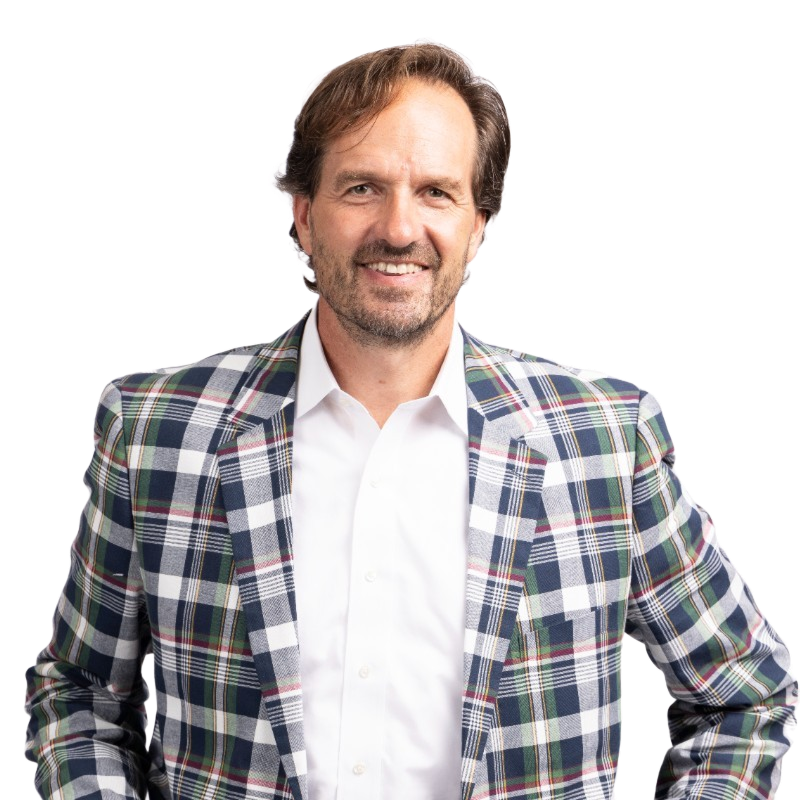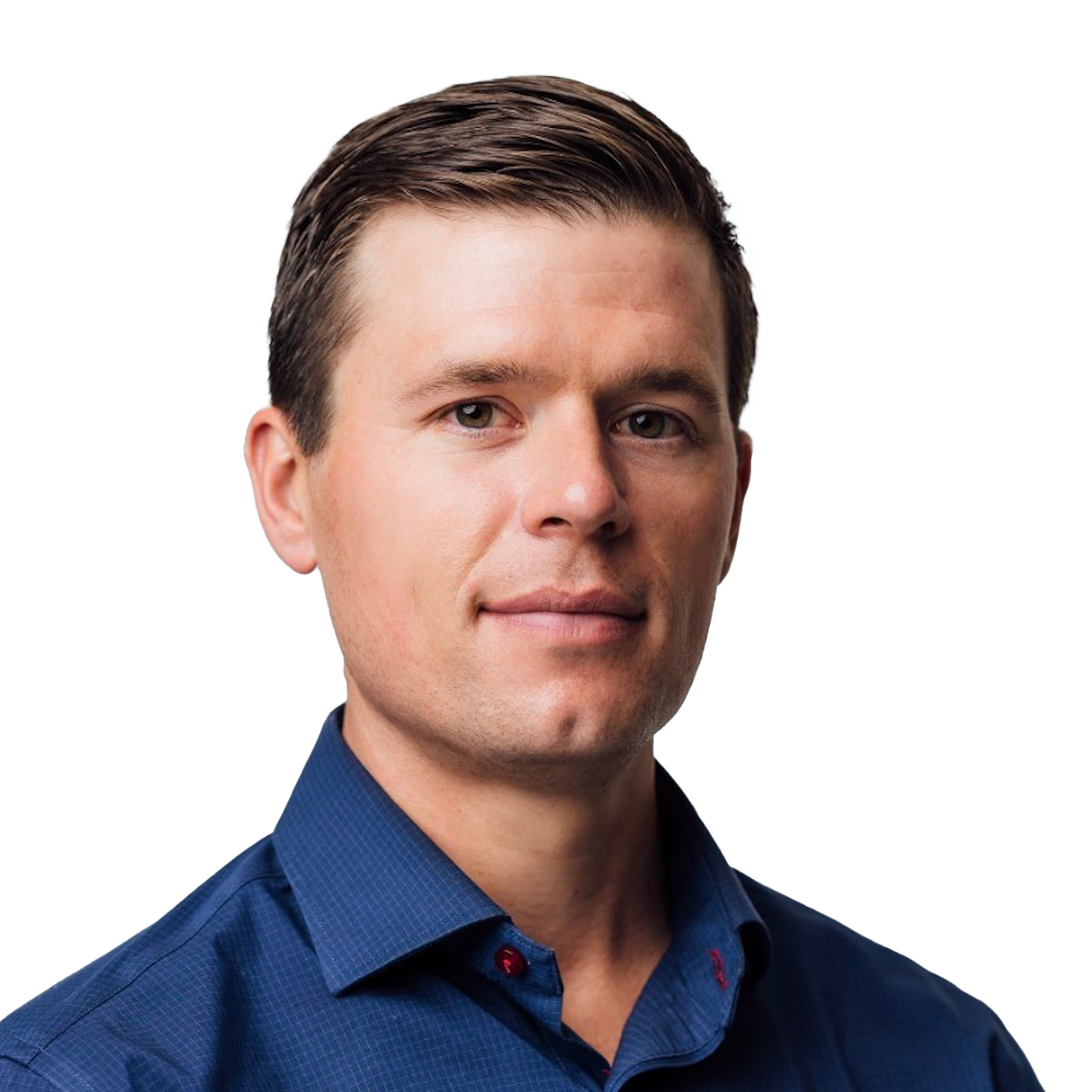

In this episode of Path to Growth, Tracy Young, co-founder and CEO of TigerEye, sits down with Dave Boyce, Executive Chairman and EVP of Product at Winning by Design. Dave shares insights from a diverse and accomplished career spanning startups, scale-ups, and public companies—and dives into the growth frameworks that guide high-performing teams today.
The conversation begins with a personal reflection on how formative experiences shaped both Tracy’s and Dave’s values around hard work and resilience. From there, Dave introduces the concept of “growth architecture,” emphasizing the importance of designing intentional systems at every stage of a company’s life cycle—from product-market fit to long-term optimization.
A major highlight of the discussion is Winning by Design’s “bow tie” model, which reimagines the traditional sales funnel to account for the entire customer journey, from acquisition to expansion. Dave underscores that effective growth comes from structured handoffs, strong communication, and, most of all, deep empathy—both in product design and marketing.
The episode also explores why most acquisitions fail, and Dave outlines the two integration models that tend to succeed: full and immediate absorption into the parent company or complete operational independence. Anything in between, he argues, is usually doomed to underperform.
On the topic of AI, Dave shares lessons from the recent AI GTM conference, calling out practical use cases that are actually working today—from AI-powered sales agents to onboarding frameworks for agents as hybrid teammates. He encourages professionals to become “AI native,” stressing that the most valued go-to-market professionals will be those who embrace AI as a force multiplier rather than a threat.
The conversation wraps with reflections on crisis leadership, the importance of alignment across teams, and parting advice for emerging leaders: pursue fit and happiness first, and let everything else—career opportunities, compensation, and recognition—follow from that alignment.
A thought-provoking and human-centered discussion, this episode is a must-listen for anyone navigating growth in a rapidly evolving business landscape.
Podcast Transcript
Dave Boyce: [00:00:00] Marketing gets it wrong when they forget about the humanity of the, of the person who needs to make a decision. And product gets it wrong when they forget about the humanity of the person who's gonna be using the product. So I use the word empathy. I think empathy is the, at the core of product and of marketing, what you wanna do is understand your buyer or your user as a human who has a job to be done, who's trying to make progress in their own life or career, and then meet them where they are, and that it starts with marketing and then it gets delivered on with product.
If we can center the user in all of that journey, we're gonna do way better. If we leave the user behind and we just start going like. Salesperson to procurement. You know, that's a horribly fragile way to operate.
Tracy Young: Hi, welcome to Path to Growth. I'm Tracy Young, co-founder [00:01:00] and CEO of TigerEye. Today we are joined by Dave Boyce, executive chairman and EVP of Product at Winning by Design.
Dave, welcome.
Dave Boyce: Thank you so much, Tracy. Uh, this is, it's gonna be a good conversation.
Tracy Young: Yeah. To, to start, can you tell me about what you learned from your mom and dad? Huh?
Dave Boyce: You're going right for it, huh? Yeah. I'm the oldest of eight kids, Tracy, and, uh, I grew up in Oklahoma and I wore hand me down clothes from whom you may ask.
Huh From people who felt sorry for us. My mom and dad worked hard. My mom did not work outside the home. My dad, you know, made always less than $50,000 and they owned their home and all the kids, you know, got college educations and they really invested in us. I learned about love and hard work, but we had to work hard 'cause we all had to kind of like earn our ways forward.
Tracy Young: Yeah, my parents were refugees of the Vietnam War and they came here with nothing, with no family. [00:02:00] And so wherever the line was between poverty and just being homeless, they were always like, not always, they worked themselves into the middle class eventually, but for many, many years, just right above that line.
Dave Boyce: Whoa. Um, so a story you know,
Tracy Young: about hand me down clothes, I think that's totally fine. The kids grow out of it so fast. Anyways. Totally. Um. And certainly getting to see how hard they work so that their kids could have a better life than they did was, you know, really inspiring for me and has made me who I am today.
And it sounds like for you too.
Dave Boyce: Yeah. I'm a big fan though, like anyone who's courageous enough to pick their family up and move from one country to a country that they've never visited and then start over. Wow. What a amazing. Yeah. Hats off to your parents.
Tracy Young: That's another topic. But, um, people people do that when they have no choice.
You know, from my parents, they were prepared to. Like die on a boat [00:03:00] into the ocean, then stay in a country that they didn't say feel safe in with their daughter. Mm-hmm. Um, my older sister.
Dave Boyce: Mm-hmm.
Tracy Young: Thanks for sharing that with me. Yeah. So tell us about winning by Design and your role there.
Dave Boyce: Yeah. So as you said, I'm executive chair, but you know, the executive part is my operating role with product and Winning by Design is, uh, as you probably know it.
A global growth advisory firm, we aspire to step into the void that was left when Serious Decisions was acquired by Forrester. I had a hand in that. I was on the board of Forrester when we bought Sirius that pulled Sirius up into kind of an enterprise space and kind of the scale ups of the world, the 50 to $500 million kind of companies.
A little bit, and even a little bit smaller than that, we're like, wait, where did Sirius go? And so growth Advisory is our thing. We have frameworks and research and methodologies that really help [00:04:00] you lean into growth in a way that's architected, not just happenstance. And because money is not free anymore, we can't just throw money at the problem, we have to architect our success.
And that's what Winning by Design tries to help customers with.
Tracy Young: And it's so important, especially as companies scale, to have those architectures in place, whether it's sales processes or even communication. I feel like we have like a whole architecture of how communication runs down the food chain so that everyone knows what we're doing as a company.
Dave Boyce: Oh my goodness. Communication. And now with structured and unstructured data and the advent of AI communication. Can actually translate across, we call it the bow tie, like the customer journey, but can translate across the bow, tie in using unstructured inputs. But translating in a structured way so that those handoffs are all codified.
That's a huge opportunity I think, going forward. And, and you're right, it's about communication and [00:05:00] handoffs.
Tracy Young: So tell me more about the bow tie method. This is something that helps with the whole sales funnel end to end. But explain it to me like I'm five years old. 'cause I actually, not sure I'm, I'm super familiar with it.
Dave Boyce: Can we go like, uh, 20 years old? Yeah. We gotta start with the sales and marketing funnel. I don't know what a 5-year-old knows about that, but, you know, sales and marketing funnel, traditionally it's wide at the top and then, you know, I qualify out and filter out, down to the kind of people who are qualified to and ready to buy based on desired impact.
Got it. Cool. Traditional businesses that stop there. But in a recurring revenue business, it doesn't stop there. It almost starts there. So we tip that on its side and turn it into a bow tie. So that kind of the nod of the bow tie is my initial kind of commitment between the customer and the, uh, company selling the product or service.
And then from there, I need to onboard, [00:06:00] deliver impact, retain based on that impact, and maybe expand my footprint, uh, based on. That successful impact, and then it ends up looking like a bow tie. And if we're doing it correctly, I start opening up again, at least in terms of recurring revenue, meaning, um, you know, I've got a, I got a north of a hundred percent net revenue retention, so it's getting wider.
So it gets narrower on the way in and then it gets wider on the way out as we succeed together.
Tracy Young: Right. Just like a, just like the shape of a bow tie picture, just like
Dave Boyce: the shape of a bow tie. Yeah.
Tracy Young: Walking me through that, you've been part of several acquisitions. What's the patterns that you've seen? Like what makes an acquisition successful versus the ones that
Dave Boyce: aren't?
That is a big question. It is very difficult to make an acquisition successful, like full stop. Like I'm, I'm sure that more than 50% of acquisitions fail. I bet it's more like 70%. And you'll see companies that got bought and then got spun out for half of the initial, you know, purchase price and that's just 'cause they [00:07:00] couldn't get those operations to kind of, to work together.
I've seen two successful models on the other side of acquisition integration. One Oracle bought a company of mine called Profit Logic and they. We're not shy at all. We were gonna run the Oracle Playbook period, like within a week. We were gonna have Oracle systems in place. You know, our emails were gone, the domain was gone, the calendar was gone within a month.
We were going to have rebranded within, uh, six months. We were going to have kind of gotten all on all of their kind of go-to market quota systems and, uh, measurement, you know, and we're, we're basically reporting back in qbr. Pretty much within six months that succeeded. It didn't feel good.
Tracy Young: To
Dave Boyce: me because, you know, we had built all these special things, but it succeeded.
Like you're either gonna operate well within the Oracle and, and I had one other company bought by a company that did the same thing and it worked great. The other thing is to leave, uh, an acquired company relatively [00:08:00] independent or, sorry, let me say. Independent. Yeah. Full stop. Not relatively independent.
Like LinkedIn was bought by, um, Microsoft and it's a complete. Reporting structure into an independent CEO, independent p and l independent operating systems. They're just running the same way they were about run before and when I have spoken with Microsoft executives, including Satya, they don't have any intention of integrating that.
They're just gonna run it independently. They don't even share data across those two. I'm sure they share learnings, but they don't share data or processes or anything. That works too. Everything in between is, is a disaster. Like you kind of half integrate, but you don't have the courage to go all the way.
You keep people around who wanna run the old playbook while you have people who wanna run the new playbook. That doesn't work.
Tracy Young: Yeah. I got the privilege to get acquired into Autodesk with my last startup, and we were relatively independent. Okay.
Dave Boyce: Which means [00:09:00]
Tracy Young: it was just not working out, and I was supposed to run that.
Company, our startup kind of independent for a full year. And by Q1 it was very obvious. Things just weren't working out, so we pushed for full integration, okay, by five, and it was just much better. We just ripped the bandage off. It's like we are integrating in the mothership right now. You know, it starts with systems as you say.
Cause we can't be on two calendaring systems and we have to go to schedule meetings to talk about integration and you know, it's not connected to the conference rooms and
Dave Boyce: Right.
Tracy Young: I remember the immune system reaction of the team, like, why are you making us go onto Autodesks shitty tools? It's like, totally, because you're part of Autodesk now.
Dave Boyce: Totally. Yeah. We use Zoom. We don't use teams. We use, uh, we use Bamboo hr, we don't use, uh, PeopleSoft. Like, it doesn't matter. Yes, you do. You do now.
Tracy Young: Yeah. Yeah. You've led startups, scale ups and public companies. What are the [00:10:00] patterns that you see across successful growth journeys? What's most important at all of these stages of companies,
Dave Boyce: We said the word before and you picked it up and I, so I think we're singing off the same song sheet here, but kind of deliberate. Growth architecture, Tracy, some, we call it revenue architecture. It's growth architecture. It's like, and it's as applicable to a startup. You're working on different things in a startup.
Startup you're working on, you know, deliberately pursuing product market fit, and then in a scale, and then. Go to market fit. In a scale up, you're really working on repeatable processes and unit economics, and you're just trying to get kind of that steep part of the growth curve working. And then in an enterprise, you know, you're really working on things like sustainability, long-term profitability and optimization.
But in all cases, you don't wanna take any of that for granted. You wanna architect it specifically. You wanna know what you're going for. And I'm a big fan of a general manager or. [00:11:00] A CEO who knows what she's looking for. She knows what she's solving for and, and who is very deliberate about how to go after it.
I am not a big fan of the empty suit leader who can't roll her sleeves up and doesn't have the patience to understand. How growth is being built. But as soon as you find someone you know that per you, you'll, you know these people, like when you meet that person, as soon as you find someone who thinks kind of is a systems thinker about building this machine, you're like, Ooh, I'll bet on that person.
That'll work.
Tracy Young: You've held both product and marketing leadership roles. How are they different? Let's start with that.
Dave Boyce: I will tell you how we, how both get it wrong. Marketing gets it wrong when they forget about the humanity of the, of the person who needs to make a decision. And product gets it wrong when they forget about the humanity of the person who's gonna be using the product.
So I use the word empathy. I think empathy is the, at the core of product and of [00:12:00] marketing. And you know, when we lose that and I'll, uh, I'll throw Oracle under the bus. 'cause I really think. I praise them for their acquisition integration. Now I'm gonna ding them for the way that they marketed, at least back then.
Their marketing was all, and I hated it 'cause I was running marketing at the time. Oracle's number one in Finserv. Oracle's number one in retail. Oracle's number one in database. Oracle's number one in growth rate for CRM, like. I don't, that's has nothing to do with your buyer. And then when you put features upfront, also has nothing to do with your buyer.
What you wanna do is understand your buyer or your user as a human who has a job to be done, who's trying to make progress in their own life or career, and then meet them where they are, and that it starts with marketing and then it gets delivered on with product. If we can center the user in all of that journey, we're gonna do way better if we leave the user behind.
We just start going like, salesperson to procurement. You know, that's a [00:13:00] horrible, it's a horribly fragile way to operate. And sometimes one team will, will have empathy and the other team won't. Like, I'm gonna market with real empathy, but I'm gonna deliver a, a hard to deploy product. Or I'm going to market, we're number one, but deliver actually a really good product that delivers value.
I like, I kind of want to get on the same level in terms of user empathy.
Tracy Young: Yeah. That makes sense. It's 2025. We're not gonna get through this interview without talking about ai. What's your take on it?
Dave Boyce: Just last week, winning by Design did A-A-I-G-T-M conference in San Francisco. We spent months getting ready for this, trying to separate the hype.
From the reality, like let's go find, everyone knows what the art of the possible is 'cause we all read and we all get bombarded. You know but what's actually happening on the ground right now? Like where are examples in GTM of where AI is either augmenting or [00:14:00] replacing humans? And succeeding.
'cause there's a lot of trials out there with mixed results. Let's go find the ones that are working. We sourced 30 examples that are working. We highlighted from stage some kind of real live demos, like here's an agent making a phone call. Having a conversation with somebody over like a telephone line.
Here's an agent that's representing as an animated avatar and doing inbound lead qualification and even selling, uh, one of the awards that we gave away was to HubSpot, who actually has an agent picking product, acquired customers off of the, uh, kind of PLG happy path, and then helping them convert to paid with like.
Human assistant, but it's not human assistance, it's an agent. We saw some really cool examples of that. So I would say what's not gonna work, what's not working and what's not gonna work is some sort of wholesale whitewash of like, you know, I'm gonna, you know, never hire another human. Like, we're only gonna only hire robots from now on.
Like, that's not gonna work. [00:15:00] What's also not working is I'm gonna buy a technology and that's gonna solve my problem. Also not gonna work. I sat. Two days ago, I sat next to A CEO who said it really clearly. He's like, you can't assume that you're gonna put an agent on your human team, and that agent is just gonna start succeeding.
You actually have to onboard that agent and you have to train that agent. You have to manage and coach that agent to operate in a hybrid team alongside humans. Whether it's helping the human succeed at her job or. Doing the same job as a human shoulder to shoulder. In either case, they need to be onboarded like a human.
The AI does. And so being really specific about defining the job, setting up the framework within which the AI is gonna operate, setting up the measurement so that you can calibrate and tune and kind of train and managing coach going forward is what we see working These broad swaths are not really working.
Tracy Young: Yeah. And. From our perspective and we get to talk to so [00:16:00] many people, um, a lot of analysts and folks in, in go to market sales, marketing, and finance, there is a lot of fear, especially in the middle layer. You know, there might be a recession coming. Their headlines are talking about big companies having, you know, layoffs and people have bills to pay, people have children to take care of.
So what is your advice for the workers who are. Afraid of their jobs and specifically for this this group. It's, you know, they're white collar, go to market jobs.
Dave Boyce: Yeah. It's kind of like a calculator moment. I've heard AI referred to as a calculator moment. Like, okay, here's life before we had a calculator.
I'm penciling everything out. I'm doing long division, here's life after a calculator, I can just punch it in. So I can either resist the calculator or I can embrace the calculator. You know? Did we forget math on the other side of the calculator? Some people might have, but mostly we just learned to do higher order math [00:17:00] and operate more quickly and incorporate the calculator into our workflows.
And that's my advice to young professionals is like, especially, you know, the more curious and flexible you are, uh, and the more you can embrace and the more digitally native you are, just become AI native. You know, like I'll tell you, the people I'm hiring are AI native, like I want you to be AI native.
It has nothing to do with how old you are. It has to do with how. Curious and flexible you are, and whether you've embraced or shunned ai, but you come as an AI capable human in the GTM world, you're worth way more to a GTM operation than the person who's trying to resist it. Or, you know, out of fear trying to sort of say AI over there.
We humans, you know better over here. No, it's a reality. We now have calculators, we now have ai. How can it help you do your job better?
Tracy Young: Yeah, and that's the message we send out too, which is AI's not gonna replace people, but people using [00:18:00] AI to supercharge themselves are going to replace people who don't.
That's just for
Dave Boyce: sure.
Tracy Young: That's just how it's gonna happen because for most jobs, especially in go to market. I mean, half of your job is talking to people and getting buy-in and like having this tribal knowledge and wisdom and pattern recognition and this like human perspective of what are we actually gonna do about this setting strategy and then actual execution, which is really, really hard.
AI can help with some pieces of that, but it's not gonna do all of it. Not right now, at least, or not in the next 12 months.
Dave Boyce: No. So now, so I heard, you know so what used to be called an account executive might in the future be called a deal strategist. Uh, that's just. An evocative kind of statement.
Well, what does that mean? It means all the stuff that you just said. It's the stakeholder management, it's the conversations, it's the nuance. Well, what about all the other stuff? What about the note taking and the, and the forecast management and the, um, CRM [00:19:00] updating and the Oh yeah. AI's gonna do that for you so you can do more of what you do uniquely well, and then you rely on AI to take the drudgery.
Tracy Young: Yeah, I was at a another go to market conference. Um, this was in LA a few weeks ago, and I got to give a talk there and there's some marketers in the room and they did talk a lot about their fears. They're just like, a lot of my peers are on LinkedIn looking for jobs, and it's been months and it's just hard because so much has been replaced by even just chat GBT or any of the models.
From my perspective, there's just a lot more bad marketing right now. In the world? What's your take on it? Is it gonna get better? Is it gonna get worse?
Dave Boyce: AI's generating a lot of content. Ai, it's not quite automatically pushing that content into channels, but it's gonna get there. It's building, you know, micro sites already.
It's has the promise of doing kind of mass customized emails, but I haven't really seen that in a way that wasn't [00:20:00] stitched together. But it's getting there. It's definitely gonna get there, but you know, who's doing the thinking about? Who's got the empathy for the end user who's checking the AI to make sure that we're meeting the end user where she is, like AI's gonna get it 80 to 90%.
Right? And then who's actually building out kind of the strategy for that customer journey? AI's gonna get that 80 to 90% right? But there's gotta be an architect that sits above it, you know, like the marketing strategist. And so what I, my recommendation, if you're on the bench. You got lots of time to go figure these tools out.
And most of them you can get your hands on and you can start playing. You can actually make yourself an expert pretty quickly. Just two days ago I had someone reach out to me and they said they were in between jobs, could they volunteer on any of our growth initiatives? And I'm like thinking, yeah, I've got like six things that you can do right now, and I know this person, I trust them.
It's not like I'm just taking a random person off the street, but I guarantee you [00:21:00] as they pursue their kind of. Job path. Two months from now, they'll land a great job. And that job will probably be partially as a result of them having really immersed themselves in some AI go-to-market stuff that differentiates themselves from their peers.
Tracy Young: Mm-hmm. As an advisor who gets to meet with a lot of people and a lot of teams, especially in the C-suite, what are the red flags that you notice when you're working with new teams?
Dave Boyce: So the, the biggest thing, Tracy, is alignment. This has really plagued us, you know, companies and, you know, we all come about this honestly, we grow up and we get bigger and we hire leaders and leaders.
Every one of our go-to market leaders has an MBA and go-to market, but they all got 'em from an MBA quote, unquote, but they all got 'em from different universities, right? Like I learned mine at Oracle and you learned yours at, who did you start your company to again?
Autodesk, right? So did we [00:22:00] run the same place?
Probably not. Is yours right for this current environment? Maybe is mine right? For this current environment? Maybe. But we got it. What we gotta do is get aligned and there are different go to market motions that are appropriate in different markets. So if you're used to running a PLG motion and I'm used to running a two stage inbound kind of SDR AE motion, which one is right?
Let's decide, let's get aligned. How are we gonna measure it? That's the number one thing when I start engaging with the team is. We gotta get alignment. Everyone's gotta understand the game we're playing. If we're playing hockey, great, let's play great hockey. If we're playing football, great, let's play great football.
If we're playing basketball, let's play great basketball. But it's not a function of where you came from or what you learned in the past. It's a function of how to design today's business. The way that we wanna design it, and once we're aligned, then usually things start to happen. Like usually we know we're measuring in the same way, we're operating in the same way, the same playbook.
We've got. To your point about communication, we're communicating and doing handoffs in the same way. We're putting things in systems in the [00:23:00] same way. Marketing is no longer declaring victory while sales is declaring failure, and CS is declaring like I'm underwater because we all see it the same way.
We're operating against that bow tie. So I, I think the number one thing is alignment, but it's not easy. Like it's not easy to drive alignment. You gotta have leadership, true capital L leadership that insists on that and doesn't let those silos keep operating.
Tracy Young: Yeah. One of the problems that we see over here at TigerEye is something as simple as key metrics.
Yeah. Everyone's using a different. Definition of it in a different formula to calculate things. And that's one of the problems that we solve where we're here at Tigereye, is just getting everyone on the same formula when they talk about RIN rate and churn and how they're calculating it, SQLs, it's uh, so even when you see teams arguing, it's like, wait, you guys aren't arguing with the same thing?
You're using them as different, you know? They're completely different things, even though you're using the same words.
Dave Boyce: So important. That's kind of where this bow tie data model comes in [00:24:00] place is there's standard definitions for, like you said, an MQL. Great. So now when marketing talks about an MQL, they mean the same thing as when sales talks about an MQL.
Same thing as when finance talks about an MQL. So we're measuring everything according to the same definition. Now I can run faster. Right now, I don't have to spend half of my meeting deciding whether we're speaking the same language and then the other half working on the problem.
Tracy Young: A number of times where I've had sales, marketing, and finance show me either a different dashboard or spreadsheet, you know, just on pipeline or something like that, something on the funnel, and it's like, wait, why are the numbers different?
I can only imagine theirs is the right one.
Dave Boyce: That's gotta be super frustrating for you. Like you're like, we're trying to make decisions to get the company forward, not decisions about who's right.
Tracy Young: Yeah. Yeah. It's, it's so toxic and just, it's just ineffective. Yeah. And I feel like most companies are plagued with this.
Dave Boyce: Sure. I think most, for sure. Definitely more than half.
Tracy Young: And then probably. [00:25:00] Just a, you know, a lack of leadership and bad systems. I think the, the leadership is the hard part.
Dave Boyce: Mm-hmm.
Tracy Young: So what are your long-term, long-term goals for winning by design?
Dave Boyce: You know, our aspirational goal is to make, go to market.
Interoperable. That sounds really weird, but you know, we don't think you should have pay a translation tax. Internally, we're talking about the internal silos between marketing, sales, customer success, finance. Got it. But what about when I bring on A CRM versus a conversational intelligence platform, or I hire a marketing.
Agency versus a, uh, sales methodology coach. Shouldn't that all kind of reconcile to a, this a same view of the world? What if MQL meant the same thing across all of those? And what if like the handoff, we use a spiced methodology situation, pain impact, critical event and decision, and we use that. To do handoffs across the bow tie, [00:26:00] and we have certified partners now who have spiced built in.
So Fathom Grain momentum, Sybil Gong. These are all using spiced as the way to capture notes in an unstructured way, put it into a structured thing that can then feed downstream systems, other certified partners of ours that are measuring and monitoring pipeline. So spice is a really simple example. Bow tie is a really simple example.
We don't have a big kind of conquer the world objective or even a big monetary objective. We have an objective to just speed up innovation by making those things interoperable.
Tracy Young: That's really admirable. Trust in leaders can be made or broken when things get tough. How do you deal with a crisis?
Dave Boyce: So, um, I've learned this over time.
Uh, you know, learned it the hard way. Like I've, I was running a startup in Silicon Valley where it was really [00:27:00] tough. Like I was on like my 20th and then my 25th and then my 30th fundraising pitch, and we were running outta money. Like we had revenue, but not enough. We had a team that the revenue wouldn't support and I had to raise the next round of funding, and everybody knew it.
Everybody knew like. They were rooting for me, but you know when, when I came back after the 25th and still didn't have any money, you know, people start to lose confidence and faith and I was tempted Tracy to stay outta the office like. He's fundraising, he's outta the office. Like you know, it's, and it would be a perfectly excusable, right?
'cause that's what I was supposed to be doing. But what I learned is you have to be there. Like when there's a crisis, you have to show up. You have to be in the pain with the people working on the problem. They gotta see you working on the problem. You gotta have sleeves rolled up. You cannot get a loof and you cannot get absent.
Yeah, you gotta get more present in a crisis. And [00:28:00] actually what you learn is that all humans. Wanna solve problems like not all humans. Once in a while you get someone who bounces and then you learn something about them. Like when the going gets tough, she leaves. Like, that's not cool. But most humans, when the going gets tough, as long as they have a leader that they trust, because that leader is in working on it, you know, they'll, they'll roll up sleeves and they'll work on it with you.
And that, that particular story had a happy ending, but I had to get to 40 VC pitches to, uh, to bring home the, uh, the round that then gave us new. New life, but I could have lost the team at 20 or 25 or 30 if, if I gave into my worst instincts to kind of duck and cover and, and stay, stay away.
Tracy Young: Yeah. And, and for those listening, it's, you just have to get one.
You just have to get one investor to say yes and write you that check. You know, as long as it's big enough and, uh, it's in the meantime, it is really, really hard to. Put your hard work on a platter up for [00:29:00] sale. Really that's what you're doing is selling a chunk of it and then getting nos, endorse them your face over and over again.
I guess in a lot of ways it's, it's sales, right? That's what sales is all about. You just keep going. I totally agree with you. It's like when it's wartime, you wanna see the leader there with the troops. Dave, it's been so fun talking to you. I could go on for another hour, but we're nearing the end, so I'm gonna give you a couple rapid fires.
Dave Boyce: Perfect. Let's do it.
Tracy Young: Your favorite book on business, what's your recommendation?
Dave Boyce: My recommendation is a book by Clayton Christensen called Competing Against Luck. I think it really gets to the core of this empathy and job to be done problem and really helps you think about customers and innovation.
Tracy Young: Forecasting. Is it art or science?
Dave Boyce: Oh, man. That's, that's like bait without a hook. It is. It is more science than art. It really is like, and especially now that we can capture unstructured [00:30:00] data with ai, we can hear the words of the customer rather than relying on a CSM or a rep to, to do the art piece of interpretation.
I like it as science.
Tracy Young: The best advice you've ever got on managing a sales team?
Dave Boyce: I think the best advice I ever got on managing a sales team is assume good intent. Nobody shows up wanting to fail. Nobody shows up wanting to do a bad job. So assume good intent and invest in the people.
Tracy Young: Tell us about one person who's helped you become the leader you are today.
Dave Boyce: Well, this is cheating a little maybe. Uh, it's kind of, I happened I had the good fortune of. Knowing Clayton Christensen before he passed away and considering him a friend. And I think he is the systems thinker that I admire the most, but not only for his brain, but he's also extremely empathetic. He treats everyone like a human and makes time for you.
And I aspire to be that person. [00:31:00]
Tracy Young: I'm really glad that you guys got to cross paths during this lifetime.
Dave Boyce: Yeah, really good dude. I think about him all the time.
Tracy Young: Yeah. I'm sorry he is not here with you.
Dave Boyce: Yeah, thank you. It's
Tracy Young: very, very heartbreaking to not be able to talk to someone you respect that much.
Dave Boyce: Agreed.
Tracy Young: Let's end on a good note. Let's,
Dave Boyce: yeah, let's do that. Some
Tracy Young: parting advice. What's one parting advice you'd give to our listeners or might be early on in their career or just, you know, newly in their executive roles?
Dave Boyce: Parting advice. It's about fit. Life is about fit, like you are the world's best at something, and figuring out what that is will allow you to step into an arena that will allow you to do your very best work.
Doing your best work is one of the components that makes you happy. Like are you making contributions? And happiness has gravity, and gravity attracts all the other things. So pursue fit first. Which produces [00:32:00] happiness, which then attracts salary opportunity. Partners, employees, jobs don't pursue salary opportunities, partners jobs on their own.
It goes the other direction. You can get the job and get the salary and still not be happy and then not do your best work. And that's a downward spiral. So just flip it, pursue fit and happiness first, and all the other stuff will come.
Tracy Young: Yeah. I love that Chase fit and curiosity, like what turns you on in a way, right.
Versus exactly. Prestige or me or the other stuff.
Dave Boyce: Exactly.
Tracy Young: With that, thank you Dave. It was a great conversation.
Dave Boyce: Thank you so much, Tracy. This has been fun.

.png)













